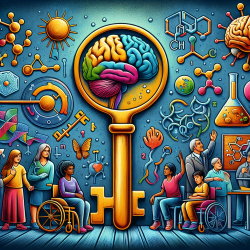Introduction to Rhizomelic Chondrodysplasia Punctata (RCDP)
Rhizomelic Chondrodysplasia Punctata (RCDP) is a rare peroxisomal disorder characterized by skeletal abnormalities, congenital cataracts, severe growth and developmental impairments, and joint immobility. The primary biochemical feature is defective plasmalogen biosynthesis. Understanding the neurological implications of RCDP is crucial for practitioners working with affected individuals.
Key Findings from Recent Research
The research article titled "The neurology of rhizomelic chondrodysplasia punctata" provides a comprehensive overview of the neurological profiles associated with RCDP. The study included 16 patients and revealed significant findings:
- Patients with severe phenotypes often fail to achieve motor or cognitive skills, while those with milder phenotypes may have profound intellectual disabilities but can walk and communicate verbally.
- 88% of patients developed epileptic seizures, with myoclonic jerks and atypical absences being the most common.
- Evoked potential studies showed initial normal latency times in 93% of patients, with deterioration occurring in a minority.
- All patients exhibited deficient plasmalogen levels, with milder phenotypes showing higher levels in erythrocytes compared to severe phenotypes.
Implications for Practitioners
Practitioners can enhance their skills by implementing the following strategies based on the research outcomes:
- Early Diagnosis and Intervention: Early identification of RCDP symptoms can lead to timely interventions, potentially improving quality of life.
- Seizure Management: Understanding the types and frequencies of seizures in RCDP patients can guide the selection of appropriate anti-epileptic drugs.
- Monitoring Developmental Milestones: Regular assessments of motor and cognitive skills can help tailor individualized education and therapy plans.
- Collaboration with Specialists: Working closely with neurologists, geneticists, and other specialists can provide comprehensive care for RCDP patients.
Encouraging Further Research
Given the complexity of RCDP, further research is essential to uncover more about its neurological implications and potential therapies. Practitioners are encouraged to engage in ongoing education through conferences, publications, and webinars to stay informed about the latest developments in RCDP research.
Conclusion
RCDP presents significant challenges for practitioners, but understanding its neurological aspects can lead to better management and care strategies. By staying informed and collaborating with specialists, practitioners can make a meaningful difference in the lives of those affected by RCDP.
To read the original research paper, please follow this link: The neurology of rhizomelic chondrodysplasia punctata.










